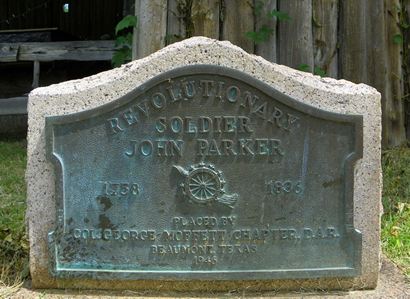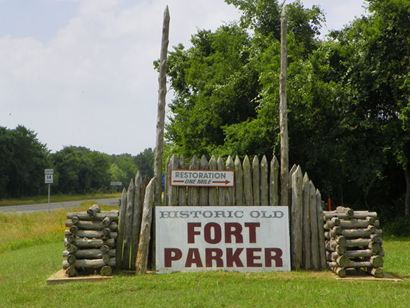After the American Revolution, the family moved to Georgia in search of safer opportunities for a better life.
Parker continued being a frontier Ranger in various raids against the Cherokee and other tribes. In 1803, he moved his family to newly acquired land bounties for his service during the War of Independence. They settled near present day Nashville, Tennessee.
For his services in the Northwest Indian War, Parker was awarded additional land bounties in Illinois. In 1824, Sallie died, and in 1825, it is believed Parker married widow Sarah Pinson Duty.
At the age of 75, Parker was recruited by Stephen Austin to settle with his extended family and allies on the frontier of Texas. Parker’s family moved with other families to Texas in 1833.
During 1835, Parker, with some of his sons and other families, began building a fort on the headwaters of the Navasota River, Limestone County, what was then called the Comancheria. The fort stood on the site of past Comanche attacks and was thought to provide protection for the families and to block the route of future Comanche raids. This was not so.
On May 19, 1836, the Comanche forces headed for Fort Parker and Also killed were Parker’s sons, Benjamin and Silas, along with two other men. Two women and three children were captured, and the rest escaped into the wilderness. Cynthia Ann Parker, the nine-year-old daughter of son Silas Parker, was one of the children captured. She lived with the Comanches for nearly 25 years. She married Comanche chief Nocona and was the mother of three children, including Quanna Parker. After a massacre of the Comanche Band of her husband, she was identified by her uncle, Isaac Parker, and returned to his home in Texas. Cynthia never readjusted to Anglo society, and died at the age of 43 after starving herself to death.
Fort Parker State Park was created in 1935, and a replica of the fort was built by the Civilian Conservation Corps in 1936, near Groesbeck, Limestone County, Texas.



